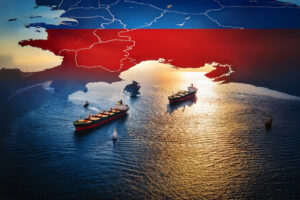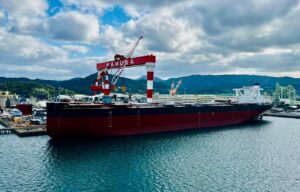Last Friday, June 21st, was a day of monumental celebration for Hamburg-based John T. Essberger, marking the company’s 100th anniversary in the chemical tanker shipping industry.
The day began with the ceremonial naming of its latest vessels, the Eberhart Essberger and Heinrich Essberger.
It was an event filled with tradition and anticipation for the incredible voyages ahead.
The tanker specialist celebrated the 100 years with the double christening of its newly build, 7.1 dwt stainless steel dual-fuel chemical tankers, Eberhart Essberger and Heinrich Essberger.
The history of the privately owned Deutsche Afrika-Linien/John T. Essberger Group of Companies dates back to the year 1924 when the former Imperial Navy Officer, Commander John Theodor Essberger (1886-1959), established himself as a tanker shipowner in Hamburg/Germany.
Today the company, which has meanwhile become highly diversified, is managed in the third generation by the Essberger/von Rantzau family.
Essberger with a fleet of more than 30 tankers operates in a joint venture with Norwegian shipping company Stolt-Nielsen under the name of E&S Tankers, based in Hamburg.
At the beginning of the year the tanker operator took delivery of the 6600 dwt duplex stainless steel dual-fuel ship Eberhart Essberger, as part of its fleet renewal programme.
Currently the company is examining opportunities to diversify its services and to invest in new segments.
When the newly-appointed chief executive Sven Schwarz was recently asked if there are any plans to invest in other tanker segments in addition to E&S Tankers’ classic parcel service, he commented that “we are constantly examining opportunities to diversify our services and also to invest in new segments in order to expand our portfolio.”
As far as Essberger Tankers’ fleet planning for the next few years, the company intends to renew its portfolio, the top management reveals.
In a recent interview the chief executive Sven Schwarz said: “As part of our fleet renewal programme, we will successively replace older chemical tankers with modern, environmentally friendly tankers, if necessary, also temporarily with second-hand tonnage. Our aim is not only to fulfil current requirements, but also to proactively meet future challenges in the field of environmental technologies.”



